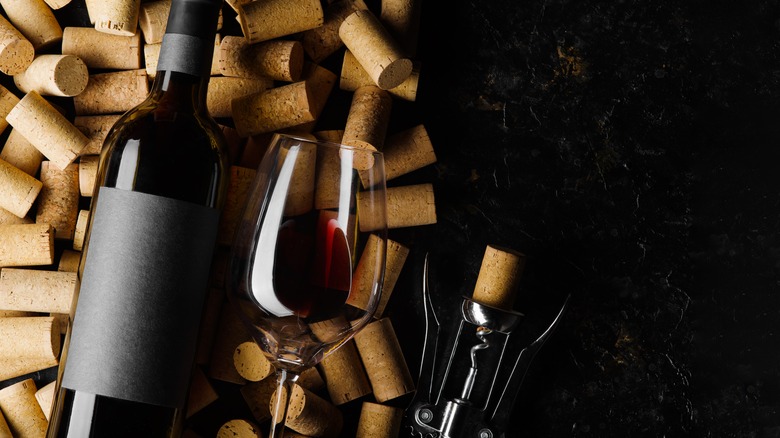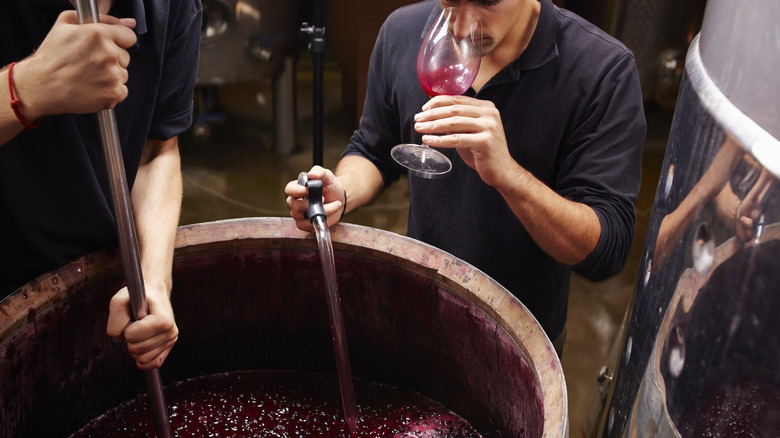The Importance Of Sulfur Dioxide As An Ingredient In Wine
Wine at its core is really just one ingredient: grapes. The ancient ways of making wine consisted of not much more than crushed grapes left to ferment in their juices and turn into alcohol. Over time, the process became more refined and technical, especially as the industry went from local to global. Because of the sheer amount of wine produced in a given year, there are many more ingredients that make up a bottle. There are the usual grapes, sugars, and yeast, but the addition of sulfur dioxide can be seen as something of a game changer.
Sulfur dioxide is an important ingredient in winemaking as it serves as the primary preservative used throughout the industry. Its purpose is to provide additional antimicrobials and antioxidants, which help stave off oxidation and spoilage for as long as possible. Though sulfites do naturally occur during fermentation, the addition of sulfur dioxide adds an extra layer of protection to ensure a good shelf life for the wine.
Though highly common, there are several organic growers and producers that make wine without any additional sulfur dioxide. Since it does bring about a chemical change to a wine, something like a Cabernet Franc will taste quite different depending on whether sulfur dioxide has been added or omitted. Regardless, the fact is that sulfur dioxide is present in nearly all commercial wine and remains a vitally important ingredient for its preservation.
How sulfur dioxide is added to wine
Sulfur dioxide is referenced scientifically as SO2, meaning that it is composed of one sulfur atom and two oxygen atoms. This composition comes in many forms, but the type that is used in winemaking is known as potassium metabisulfite. In physical form, potassium metabisulfite is a granular salt that is added at various stages of the winemaking process. The concentration of sulfur dioxide is checked regularly throughout fermentation and aging.
The total concentration of SO2 is measured between the molecules that have bonded with the yeasts and sugars, called 'bound SO2', and those that have not, called 'free SO2'. Winemakers aim for a molecular concentration of between 0.5 and 0.8 milligrams per liter (or parts per million) of wine. This is just enough to keep the oxidation and bacteria at bay, while also not being too heavily present as to affect the flavor of the wine. Anything higher than a 0.8 will create a burning sensation in the nostrils when smelled.
The amount of sulfites varies in parts per million between red, white, rosé, and sweet wines. The amounts are strictly regulated, so you can rest assured that you will not be drinking any toxic amounts of sulfur dioxide. However, if you feel that the sulfites are too much for you, natural wine is a great alternative. Still, nearly all of what you find at the liquor store is going to be within the regulated limits.

